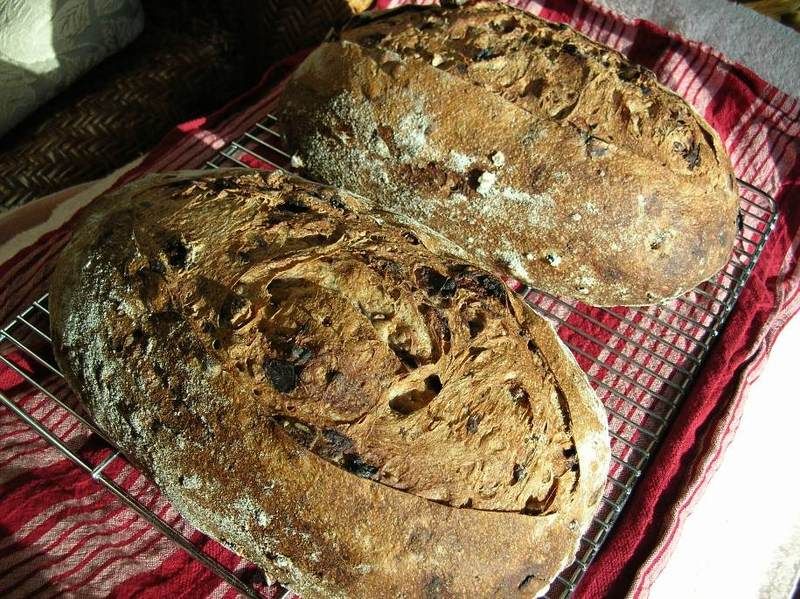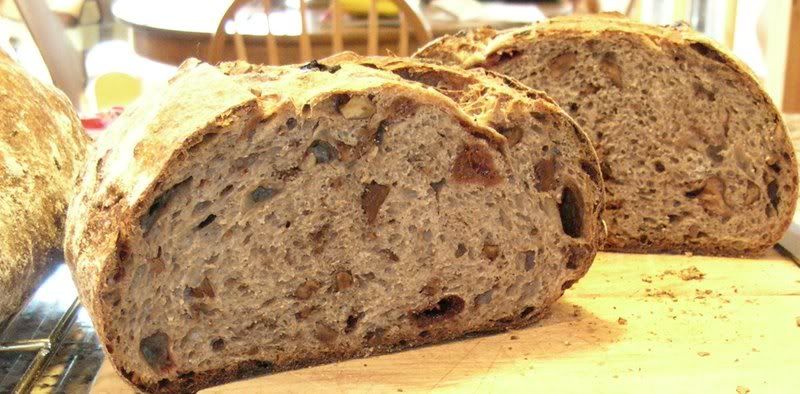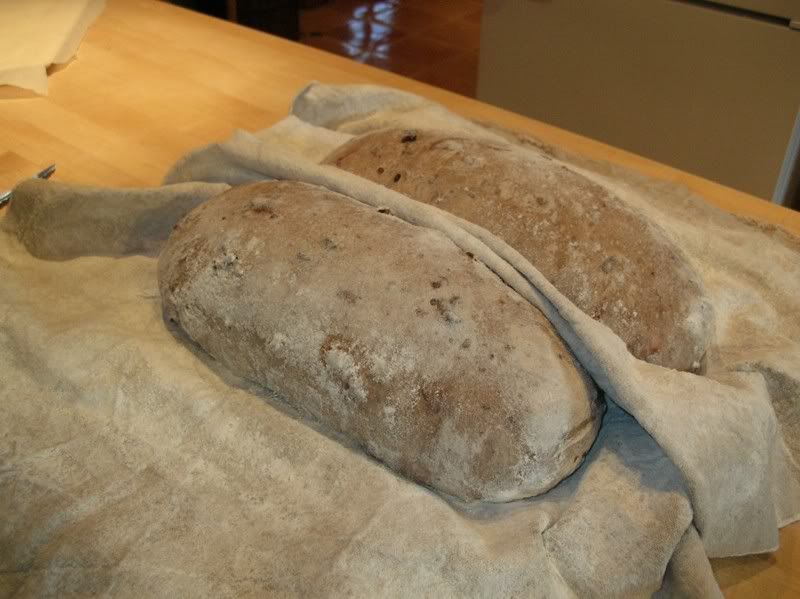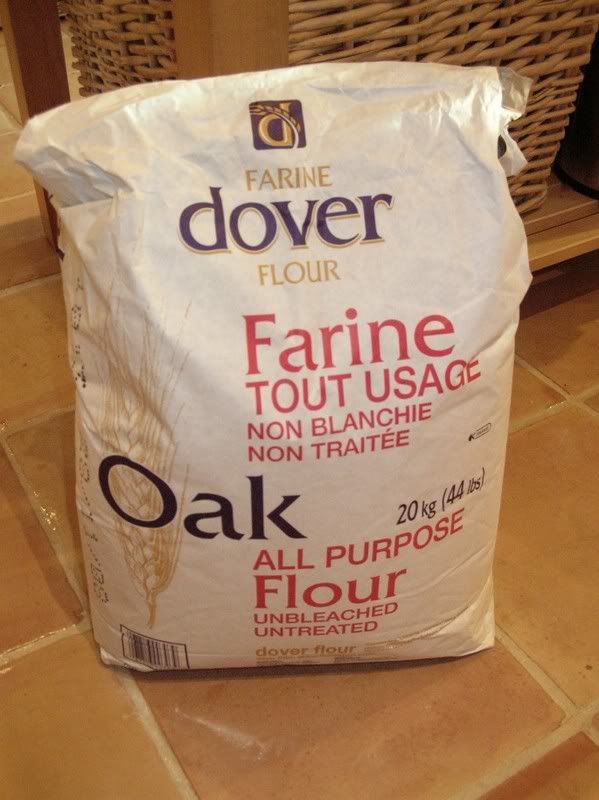Back to basics in my quest for a whole wheat sourdough that doesn't take over my weekend or keep me up half the night.
The method this time is about as conventional as it gets, except for the long, refrigerated pauses. Some of my previous attempts were so far from my usual routine that simply getting my head around them was a chore, and the bread suffered as a result. My brain will only put up with so much!
The guiding premise of this attempt did turn out to be "less is more". The dough sits around for so long that it tends to get worn out by the time it goes in the oven. So, this batch was subjected to less kneading, less bulk ferment time at room temperature and less final proof time. And it feels like I'm moving in a better direction. It's not perfect, but it's something worth tinkering with.
This formula is for 2 loaves - approx. 2 kg total final dough.
Day One - starter build
286g whole wheat bread flour
50g whole rye flour
252g water
110g whole wheat starter @ 75% hydration
Mix everything, knead for 5 min. Ferment @ room temp (65F) for 12 hrs, then refrigerate 10 hrs.
Day Two - final dough
700g whole wheat bread flour
525g water
All of the starter
2 ½ tsp salt
+20g water for kneading
Mix flour and water. Autolyse 20min
Add starter and salt, knead gently with wet hands 7-8 minutes.
Bulk ferment 1 hr at room temp. then 21 hrs in refrigerator.
Day Three - proof and bake
Flatten out the dough and let it warm (covered) 1hr at room temp.
Divide and shape.
Proof 1 ½ hrs at approx 75F. Preheat stone to 500F.
Bake 475F 15minutes - 10 minutes covered to steam.
Bake 425F another 40 minutes.


Next steps -
Leave out the rye. As much as I love a little rye in everything I fear that it may be working against me in this case. Maybe my reasoning is off, but I'm trying to protect the dough during its long, cold fermentation and rye generally encourages more fermentation, right? We'll see.
Lower slower bake. The bread is a little dense and takes while to bake through. It improves considerably after a day or two on the counter, which makes me think a little more oven time could help. I'll keep the hot, steamy start then drop the temp a little more and bake a little longer. I'll give it a bit of drying time with the oven off as well.
I think that will be enough tinkering for one bake. Except maybe I'll also try... =)
Side experiment - photos below
As I was shaping the first loaf I decided to try something different with the second. The loaf on the right was shaped in traditional batard fashion: flattened into a rectangle, long ends pulled to the middle, then folded in half. The loaf on the left was shaped along the lines of the boule method described in dmsnyder's excellent tutorial. I gave it three foldings instead of one (not because I thought it would be better, but because I couldn't quite remember how it went, I just knew there was folding - now it is locked in my brain for next time!) and then gently coaxed it into an oblong shape. There was no visible difference while proofing, but when they hit the oven they sprang very differently. The boule shaped loaf clearly tried to return to its original shape, resulting in what I think was a better spring and a more attractive final loaf. Thank you David!
Marcus



















